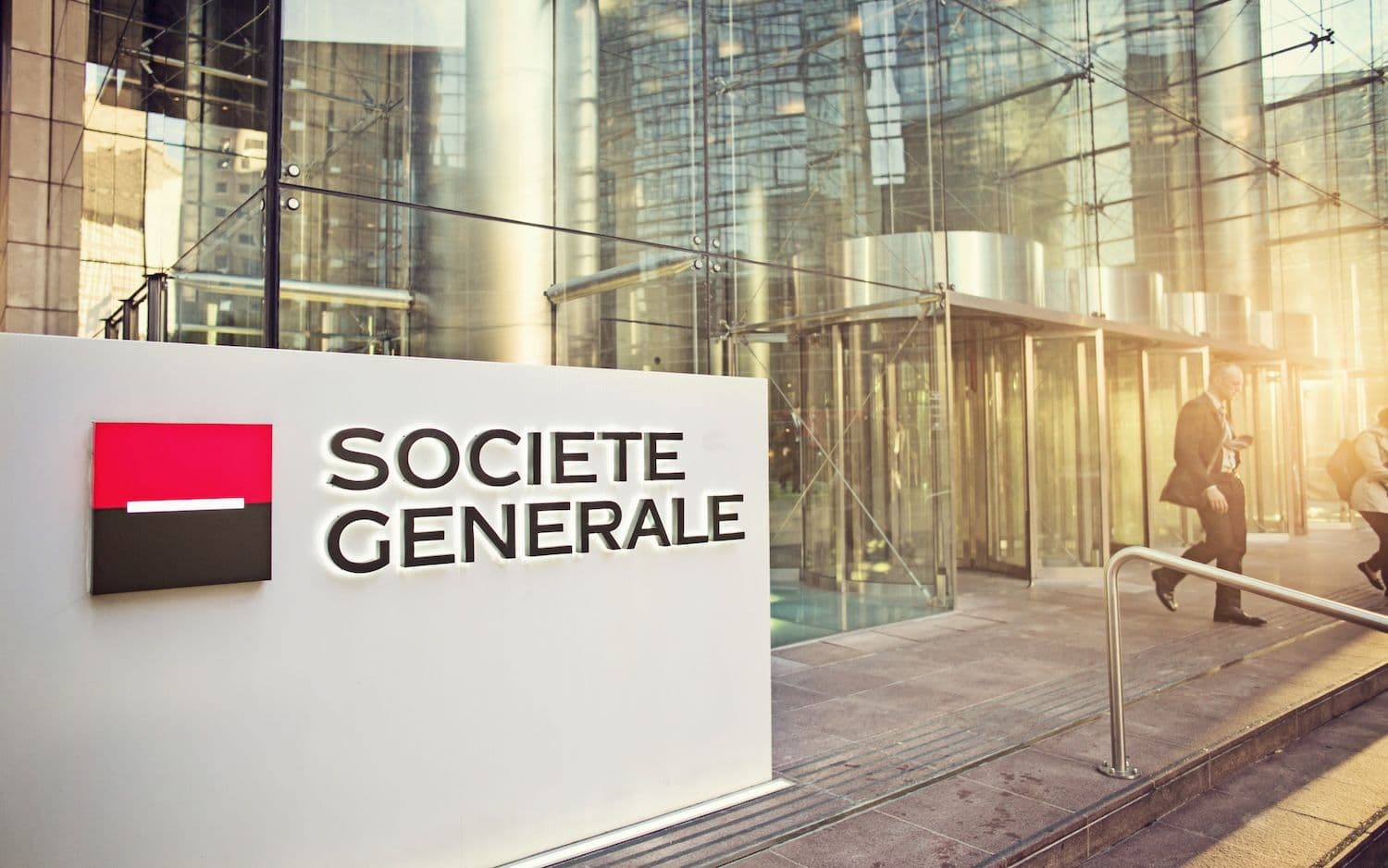Societe Generale-FORGE, the cryptocurrency subsidiary of France's second-largest bank, selected Bullish Europe as the inaugural exchange to list its USD CoinVertible stablecoin. The partnership marks a significant step in traditional banking's gradual adoption of digital assets amid evolving regulatory frameworks.
What to Know:
- Societe Generale's cryptocurrency arm chose Bullish Europe to debut its USD-denominated USDCV stablecoin, which launched on Ethereum and Solana networks in June
- The bank restricts U.S. access to its stablecoins due to regulatory uncertainty, despite Congress passing the GENIUS Act
- SG-FORGE's euro stablecoin EURCV processes approximately €40 million in daily turnover with growing exchange partnerships
Traditional Banking Embraces Digital Assets
The USDCV stablecoin represents Societe Generale's continued expansion into cryptocurrency markets following its euro-denominated counterpart's success. SG-FORGE introduced the dollar-pegged token on Ethereum and Solana blockchains in June, targeting non-U.S. investors initially.
Jean-Marc Stenger, CEO of Societe Generale-FORGE, emphasized the regulatory challenges facing American market entry. "For the moment, we have clarity in Europe with MiCA, but we don't have this clarity in the U.S.," Stenger explained. "Being a bank subsidiary, if we don't have a clear picture, we can't go ahead like a crypto player might do."
The partnership with Bullish Europe, owned by the same parent company as CoinDesk, provides institutional-grade infrastructure for the stablecoin's European debut.
Regulatory Framework Shapes Market Strategy
Both USDCV and EURCV stablecoins operate under the European Union's Markets in Crypto-Assets regulation, which provides comprehensive oversight for digital assets. This regulatory clarity contrasts sharply with the uncertain American landscape, where additional rules remain pending despite congressional action on the GENIUS Act.
Stenger projected several months before complete U.S. regulatory framework implementation.
"It's probably several months ahead of us to have all these additional rules which will be issued in the U.S.," he stated. "So for now, we restrict the access of this product to non-U.S. investors, and once we will have a clear picture of the environment in the U.S., our goal is to lift this constraint."
The cautious approach reflects traditional banking's preference for regulatory certainty over rapid market expansion. Societe Generale maintains its position as the primary stablecoin pioneer among systemically important financial institutions.
Market Performance and Growth Trajectory
SG-FORGE's EURCV euro stablecoin, launched in 2023, demonstrates robust market adoption with €40 million in daily trading volume. The success rate indicates growing institutional acceptance of bank-issued digital currencies within established regulatory frameworks.
Stenger reported steady expansion in authorized exchanges and brokers capable of directly minting and burning the euro stablecoin. Between 10 and 15 additional exchanges await onboarding through the bank's standardized compliance procedures.
"We have one single KYC procedure and policy for the group, meaning that we onboard crypto exchanges and brokers the same way SocGen will onboard any other client," Stenger noted.
The rigorous vetting process occasionally challenges cryptocurrency platforms but establishes foundation for lasting partnerships.
Understanding Stablecoins and Digital Asset Infrastructure
Stablecoins function as cryptocurrency tokens pegged to traditional currencies, designed to minimize price volatility common in digital asset markets. These instruments bridge conventional finance and blockchain technology by maintaining stable value propositions for institutional and retail users.
The MiCA regulation establishes comprehensive European standards for cryptocurrency operations, including stablecoin issuance, custody requirements, and consumer protection measures. This framework provides legal certainty that American markets currently lack despite ongoing legislative efforts.
Blockchain networks like Ethereum and Solana serve as underlying infrastructure for stablecoin operations, enabling programmable money transfer and settlement capabilities. Traditional banks increasingly recognize these platforms as legitimate financial infrastructure rather than speculative technology.
Closing Thoughts
Societe Generale's strategic partnership with Bullish Europe underscores traditional banking's measured entry into cryptocurrency markets through compliant stablecoin offerings. The bank's regulatory-first approach positions it advantageously as global digital asset frameworks mature.

